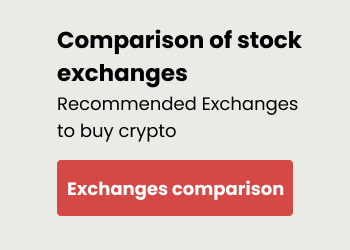During the recent cryptocurrency downturn, Memecoin values took a notable dive. Both Dogecoin and Shiba Inu experienced declines of 15% and 20% respectively in just a matter of days. Is this a perilous time to jump in, or might it present a unique buying opportunity?
How did memecoin values fluctuate over the recent days?
Over the recent days, Memecoin values have taken a sharp dip. Dogecoin witnessed a decline of slightly more than 15% within a week. Meanwhile, Shiba Inu’s downturn was more pronounced, with SHIB prices falling close to 22% in the same timeframe.

During the recent downturn, memecoins experienced the most significant losses. Meanwhile, Bitcoin’s value declined by roughly 11% in the same timeframe. Such volatility is expected for these speculative tokens. Comparatively, the decline in memecoin value was relatively modest.
Why did the value of memecoins decrease?
The decline in memecoin values was expected following Bitcoin’s price plunge. We delve deeper into the causes of this downturn in this article. Memecoins typically face challenges in a bear market, but their performance remains relatively stable when compared to other altcoins.
Compared to more “legitimate” altcoin projects, memecoins might not face the brunt of the heightened scrutiny from the US Securities and Exchange Commission. While other altcoins grapple with the potential of stringent regulation as securities, memecoins, due to their speculative and volatile nature often seen as lighthearted tokens, might experience relatively lesser impact.

Is it the right moment to invest in memecoins?
In upcoming bull markets, memecoins might witness significant price surges. Historically, these tokens tend to experience substantial percentage gains during such periods. Consequently, the current low prices might present a prime investment opportunity.
Yet, for speculative investors, caution is advised since memecoin prices might decline even more in the near future. Pinpointing the absolute low for such volatile tokens is challenging. Still, a highly favorable buying opportunity might be on the horizon.
Determining the “right” moment to invest in any asset, including memecoins, involves considering numerous factors and, often, personal risk tolerance. Investment decisions should always be made based on thorough research and preferably with advice from financial professionals. However, we can provide an analysis based on the current data:
Current Situation:
- Market Cap: $15.04 B
- Market Cap Change: -2.04%
- Trading Volume: $650,292,108
- Trading Volume Change: +19.05%
Analysis:
- Market Cap vs. Trading Volume: The market cap has decreased, indicating a drop in the overall value of memecoins. In contrast, the trading volume has increased. Higher trading volume combined with a decreasing market cap suggests that there may be increased selling activity.
- Potential Buying Opportunity: Some investors believe in the “buy the dip” strategy, which means purchasing assets when their prices drop, expecting them to rise again. If you are considering this strategy, the decline in market cap might indicate a potential buying opportunity.
- Increased Interest: The increased trading volume shows that there’s currently heightened interest or activity in memecoins. This could be traders buying the dip or selling to cut losses. A rise in volume can sometimes precede a price change, but it’s crucial to determine if this volume is more on the buy or sell side.
Calculations:
To understand the market cap change in dollar terms:
Decrease in Market Cap = Original Market Cap x (Percentage Decrease / 100) = $15.04 B x (2.04 / 100) = $0.3068 B or $306.8 M
This means that the market cap has decreased by $306.8 million.
While the increased trading volume may indicate a potential resurgence in interest or activity, it doesn’t definitively answer whether now is a good time to invest. Investing in memecoins or any cryptocurrency requires careful consideration of market trends, external influences, and personal risk appetite.
Lastly, it’s always a good practice to diversify your investments and never invest money that you can’t afford to lose. If you’re unsure, consulting with a financial advisor or doing more in-depth research might be beneficial.
How to research memecoins before investing?
Before delving into memecoin investments, thorough research and due diligence are vital. Here are key areas to explore:
- A fundamental screening process to determine if a memecoin is potentially fraudulent.
- Methods to discover emerging memecoins early on.
- Engaging with and understanding memecoin-centric communities.
- Recognizing the risks associated with memecoin investments.
- Strategies for investing in memecoins.
To identify fresh memecoins promptly, platforms like CoinCodex or Moralis Money are helpful. These platforms enable users to inspect on-chain activities and gauge the vibrancy of the memecoin’s community. Social media channels, especially Twitter, can also provide insights into the coin’s community and its sentiment.
It’s essential to observe on-chain activities, especially since many new memecoins aren’t available on mainstream crypto exchanges. Keeping tabs on token holder actions and liquidity pools can offer rich insights.
Memecoin investments come with inherent risks, often attributed to their volatility and absence of core fundamentals.
Unlike traditional investments driven by factors like technology or adoption, memecoins might lack a distinct vision, utility, or real value. Their absence of sound governance or developmental backing makes them susceptible to technical glitches or other vulnerabilities.
Given these factors, it’s imperative to invest only what one can genuinely afford to lose. Proper allocation within your investment portfolio can balance potential memecoin gains with more dependable investment avenues.
For a well-informed memecoin investment, consider analyzing the project’s whitepaper, understanding the team behind it, their expertise, and the coin’s tokenomics.
So, while memecoin investments can be alluring, they are fraught with risks. Comprehensive research and a cautious approach, investing only what you’re prepared to lose, remain paramount.
1. Understanding the Trading Volume Increase:
Given that the trading volume increased by 19.05%, we can calculate the previous trading volume before the increase.
Let x be the previous trading volume. Considering the increase of 19.05%, we have: x \times (1 + 19.05/100) = $650,292,108
Solving for x: x \times 1.1905 = $650,292,108 x = $650,292,108 / 1.1905
x \approx $546,341,907
This indicates that the trading volume was approximately $546.34M before the 19.05% increase.
2. Estimation of Previous Market Cap:
If the current market cap has decreased by 2.04% to reach $15.04B, we can estimate the previous market cap.
Let y be the previous market cap. Considering a decrease of 2.04%, we have:
y \times (1 – 2.04/100) = $15.04B
Solving for yy: y \times 0.9796 = $15.04B y = $15.04B / 0.9796
y \approx $15.3468B
This suggests that the market cap was roughly $15.35B before the 2.04% decrease.
3. Trading Volume to Market Cap Ratio:
The trading volume to market cap ratio can provide insights into market activity. A higher ratio might indicate increased trading relative to the size of the market.
For the current data: Ratio_now = TradingVolume/MarketCap = \frac{$650,292,108}{$15.04B} ≈ 0.0432 or 4.32%
For the previous data: Ratio_previous = \frac{$546,341,907}{$15.3468B} ≈ 0.0356 or 3.56%
The increased ratio suggests that trading has become more intense relative to the market’s size.
Conclusion
While these calculations provide a quantitative analysis, it’s important to remember that investing is influenced by numerous other qualitative and external factors. The increased trading activity relative to market size might suggest heightened interest or potential volatility. Always ensure that your decisions are backed by thorough research and personal risk assessment.
Recommended posts
You might also like
More from Altcoin
Credit: Source link















































